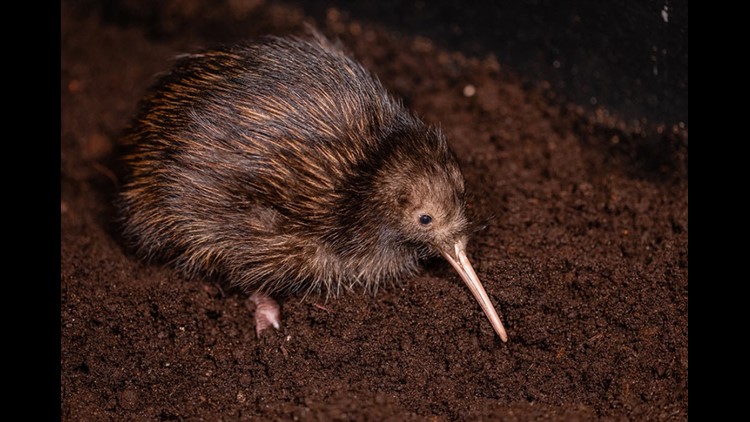TOLEDO, Ohio — The Toledo Zoo announced the birth of a female brown Kiwi chick at the Zoo's Avian Breeding Center.
The bird department at the Zoo collaborated with the North Island Brown Kiwi SSP and Smithsonian Conservation Biology Institute to hatch the egg.
This was a huge success, as only about half of all Kiwi eggs hatch successfully - and if they do hatch, nearly 90% die within the first six months, according to the Zoo.
North Island Brown Kiwi are found in New Zealand, and although revered in their native range, face many threats.
They are considered to be in serious decline due to the introduction of mammal predators, habitat loss and human disturbance.
Overall, Kiwi populations have decreased to 70,000 from millions that roamed New Zealand several hundred years ago.
"Fortunately, New Zealanders take Kiwi conservation very seriously," said Chuck Cerbini, Toledo Zoo curator of birds. "With Toledo Zoo's financial help and through extensive predator-control programs, active research, egg fostering, education initiatives and habitat protection, Kiwis for Kiwis, a charity dedicated to reversing the bird's population, is helping to ensure the long-term survival of this unique bird."
The Zoo says the egg was laid on January 9 at the Smithsonian Conservation Biology Institute, where animal managers used blood-draw techniques to determine it was a female.
Then, the egg was driven to Toledo several weeks before the hatch date, where it finished incubating at the Avian Breeding Center and hatched on March 21.
The Zoo says the chick appears healthy and is being raised off-exhibit.
She will later receive a Maori name as a sign of respect for the indigenous people of New Zealand, according to the Zoo.
She is the second Brown Kiwi to hatch at the Zoo, following male Kirihimete (meaning Christmas in Maori) born in December 2016.
The Zoo says Kiwi chicks hatch looking their mini versions of the adults; fully feathered and able to find food independently within the first ten days.
The Zoo says they also have a well-developed sense of smell thanks to nostrils at the tip of their bills. The long bill is used to probe the ground in search of food while special sensory pits on the tip of the beak help them sense prey moving underground.





